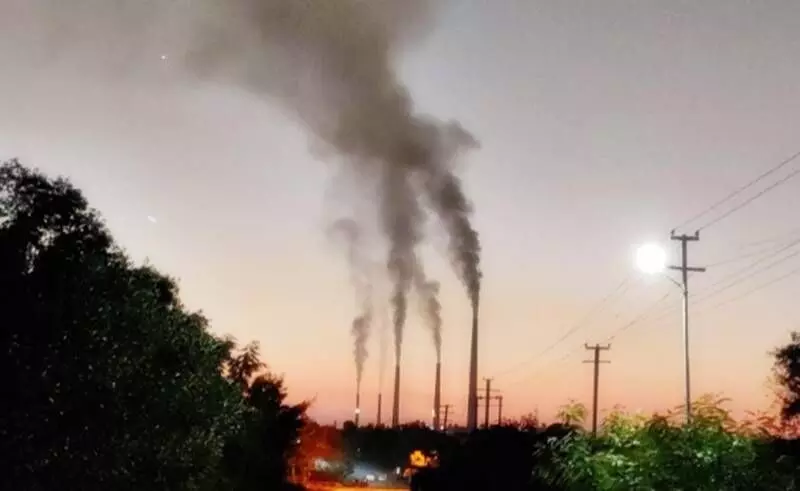Maharashtra: 1,300 lives could be saved in 2020 if Chandrapur power station had emission safety mechanism, finds Study
As per the findings of a study conducted on the implications of the absent mechanisms to remove sulphur dioxide from the emission of the Chandrapur Super Thermal Power Station, the poor air quality led to 80,000 sick leave days in Maharashtra in 2020. More details here.
 गाँव कनेक्शन 1 March 2022 11:12 AM GMT
गाँव कनेक्शन 1 March 2022 11:12 AM GMT

Highlighting the medical and economic cost of an absent safety mechanism to reduce the emission of sulphur dioxide at Chandrapur Super Thermal Power Station, a study has reported that an estimated 1,300 lives could have been saved in 2020 alone.
The study titled Health Impacts of Chandrapur Super Thermal Power Station, Maharashtra was published yesterday, on February 28. It was conducted by the Centre for Research on Energy and Clean Air (CREA) and noted that residents of Chandrapur and Nagpur are facing serious health consequences as a result of air pollution from coal-fired power units at the Chandrapur Super Thermal Power Station (CSTPS).
The study revolves around the implications of the absence of mechanisms complying with the latest norms set by the Union Ministry of Environment, Forest and Climate Change (MoEFCC) to capture sulphur dioxide at the thermal power station.
Initially, the ministry had ordered all thermal power stations to set up the desulphurisation mechanism by 2017 but as per a new order dated April 1, last year stated that plants near populous regions will have to comply by 2022, while utilities in less polluting environments should install the mechanisms by 2025 or retire the plants.
"The study found that the human cost of operating the station, especially without the mandated flue gas desulphurisation (FGD), has profoundly impacted the region's health and economy," the study stated.
"Approximately 0.8 million sick leave days and more than 1300 lives could have been saved in 2020 (actual operation parameters) if the CSTPS would have installed FGD. This would have also avoided approximately 1900 asthma emergency room visits, of which about >800 (more than 800) were among children. Compliance with FGD norms would have also avoided more than 1800 preterm births," it added.
The study also estimated that the installation of FGD would have also prevented the economic damage (due to welfare loss cost and health burden) of more than Rs 1,650 crores in 2020.
Recommendations
* Unit number 3&4 which have been operational for more than 35 years, should be shut down immediately. Emission limits for these units are higher than emissions from the other units at the plant even after installation of FGD, and continued operation of these units will result in higher per-unit damage compared to other units even after emission control.
* FGDs should be installed in all operational units(after retiring units 3 & 4) to capture SO2 emissions and prevent avoidable damages to the region's health and economic development.
#airpollution # Power Supply #coal health crisis #story
More Stories




